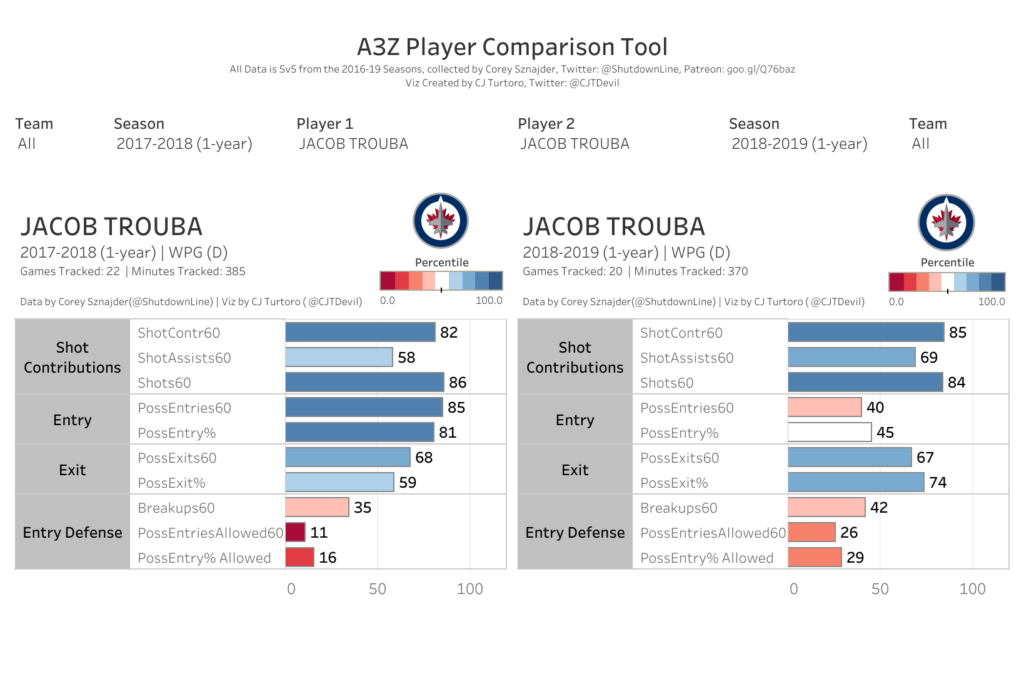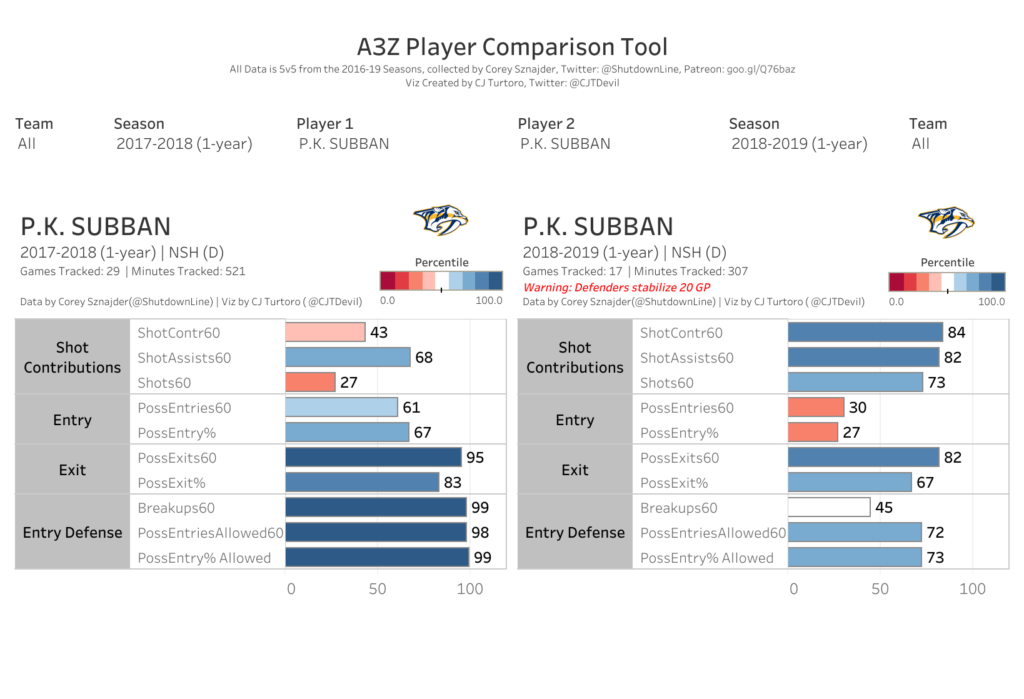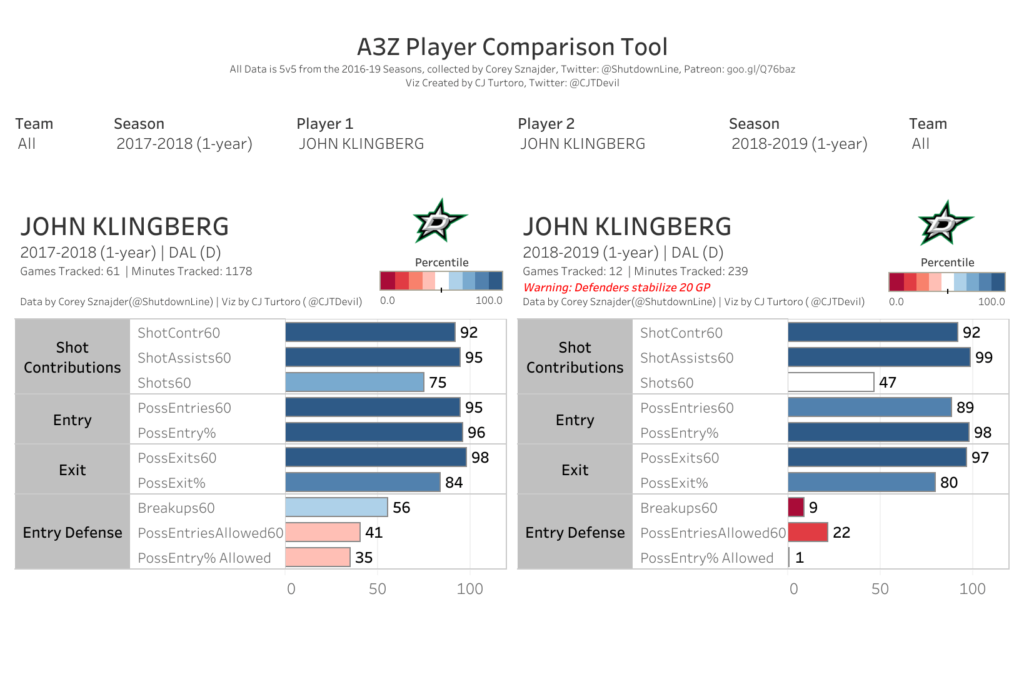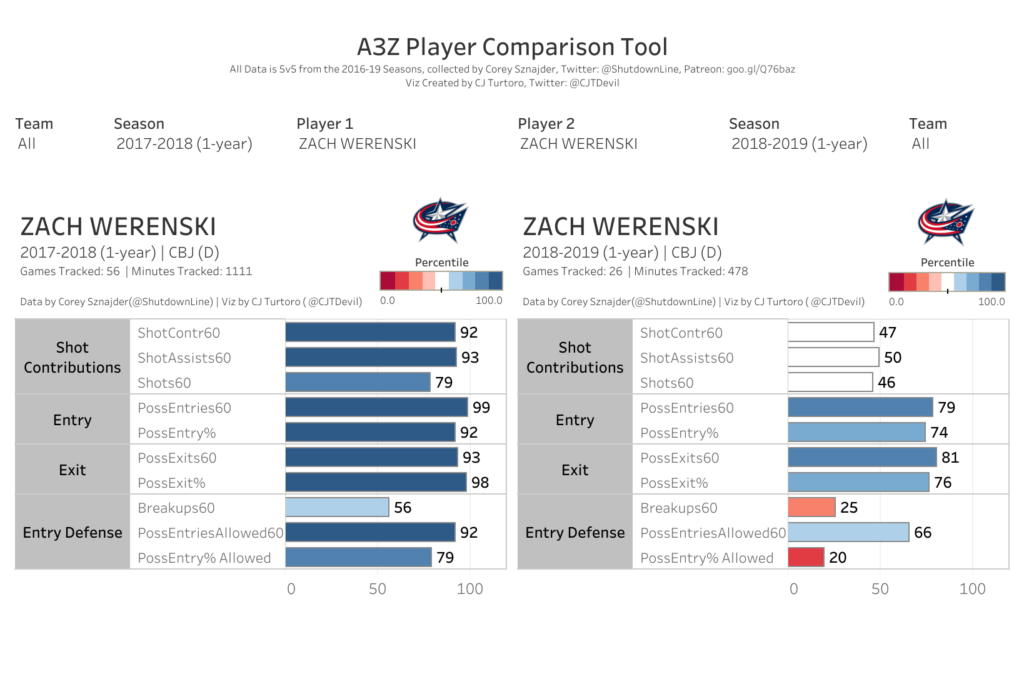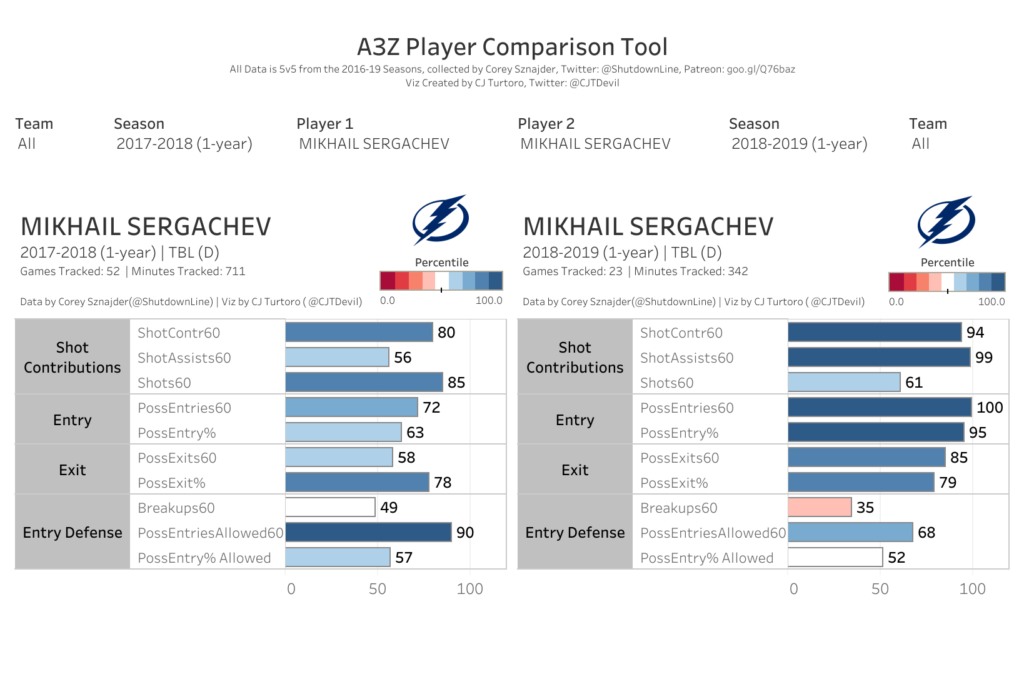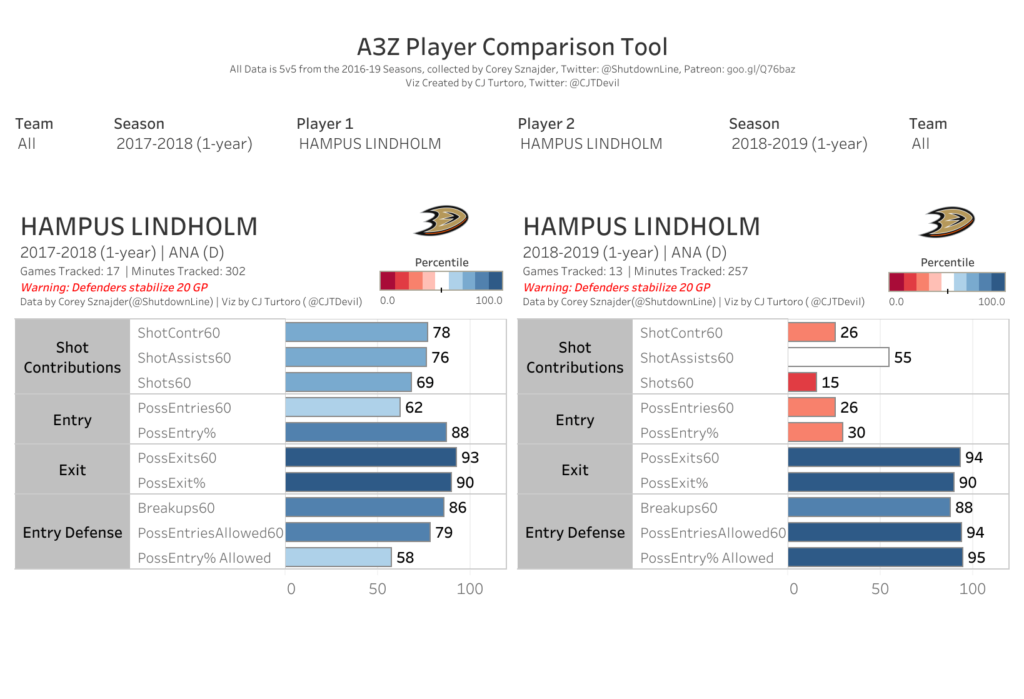
I wrote recently about the easier-said-than done, yet not-altogether-too-difficult way in which we can clear some space on defense this offseason both in terms of cap space and roster spots. Still, that’d leave the Rangers in something of a pickle because the best defenseman left would be … Brady Skjei? Not exactly a top-pair guy, and certain won’t do the trick if we want to be a surprise, dark-horse, last-into-the-playoffs-but-sneaky-tough contenders next year (I’m still convinced we totally could be and that anything is possible, but your mileage may vary). Even if we’re not however, there’s a need there, that’s for sure, because our recently-drafted defensive prospects are a bit far away.
Along those lines a brief comparison may be in order. All of these are just thoughts, and I’m not necessarily married to any one particular idea. They’d all be quite complex to pull off, and they might not all be realistic even, but this is more an exercise. Just to preface the analysis, I’m going to focus on transition play data from Corey Sznajder, as visualized by CJ Turtoro, as well as an assortment of expected goals (weighted scoring chances data essentially) from Evolving Hockey. There’s other data out there on passing and offensive zone play, man-advantage situations, and the like, but the reason I’ll be focusing on these two methodologies is because of a judgement call: there’s plenty of offensive firepower to go around, even on defense (DeAngelo and Fox are the two names that come to mind), but what we need is a defenseman who can move the puck up the ice and stifle chances against at an all-league level. A brief warning is the transition data is a bit of a small sample size, which is a lot of the reason I’m including the xG numbers.
The first name I’m going to throw is a classic, rumored to be coming to the Rangers since time immemorial: Jacob Trouba. The first thing to get out of the way is his contract status – his one year deal, a result of arbitration proceedings, expires this offseason, making him yet again an RFA. The typically proposed scenario is the Rangers trade for his rights and immediately sign him to an extension, which would likely fall somewhere in the $7-$8 million range. The price tag on this entire operation, from the trade to the cap hit, might make some balk, which is why it’s important to delve into the numbers a little bit to see what we’d actually be getting for such a hefty expense.
Trouba is well above average but presents some drawbacks that we should be aware of.
What we’ve got here is a player who is very good at contributing to shots over the past two seasons, which is good, as well as getting the puck out of the zone, another excellent quality to have in a defenseman (perhaps the most important quality to have). Big issue I have here is that his entry defense is not so hot – one notch better than getting the puck out of the zone quickly and effectively is making sure it doesn’t actually get into the zone at all. That’s an area for concern, and there’s another slightly red-tinged flag to watch out for: his expected goals percentages. Trouba’s on-ice expected-goals-for/60 minutes rate this past season was 2.44. Against? Well that was 2.59, so in other words, he’s more likely to be on the ice for scoring-chances against than for. Yikes. It could just be that the Jets were bad though, so maybe he’s better than his teammates, except for the fact that he kind of isn’t really. Relative to his teammates, his xGF/60 is 0.08 above average, while his xGA/60 is 0.04 above average (worth noting however that 0.08 and 0.04 are still significant contextually when your xGF/60 and xGA/60 are what they are, these are all rates and not percentages after all), so he’s just a touch better than the other Winnipeg roster players, but really not by much at all. None of this is to say that he’s bad, or won’t come into his own (he is only 25 still), or any number of other conditional factors that might make him worth the money, but there’s a strong case to be made that acquiring and then signing Jacob Trouba as your big-ticket defenseman would be problematic.
There’s been some rumblings about a major name on the trade market however, a player with the kind of personality that would shine in the Big Apple, and who would certainly be the kind of d-man who could eat a ton of minutes and take some of the heat off a guy like Brady Skjei, Tony DeAngelo, or Libor Hajek even. That’d be one PK Subban, but this option would be super controversial primarily because of his contract: it’s $9 million and it’s up at the end of the 2021-22 season. There’s also the fact that he’s 30, and we may have seen his best hockey already; he’d essentially be a more expensive Ryan McDonagh, is the argument against. If that’s the case then it’s a big yikes, but the good news is it might not be really.
Here’s the big thing to be aware of: he may have just had a bad year. Or, he may be on the decline. It’s tough to say in today’s National Hockey League, but the 2017-18 numbers look outstanding, while the 2018-19 numbers are just pretty good, although I doubt that they’d be worth that contract to most fans. Subban runs into a little bit of the same problem Trouba had this season as far as his xG numbers, in that his xGF/60 was 2.68 while his xGA/60 was 2.53; relative numbers in those same categories were 0.12 and 0.1, respectively. All of this is to say that he’s among the better defensemen on the Nashville Predators, but only by a little, and still likely would really outrun the pack on the Rangers, but is it worth the probable trade price and massive, medium-term (which is significant given our prospect contract timeline) contract? I’m not entirely sure I know the answer to that, and I know there’s opinions to be let loose in the comments, so I’ll punt to you guys there.
Here’s my personal favorite, although it’s again worth noting that the chances of any of these happening are well above my pay grade. That’s John Klingberg, and aside from the fact that he’s a point-producing machine, he’s also among the best transition defensemen in the league (which would make one wonder why the Dallas Stars would trade him, but maybe with Lindell/Heiskanen, and whatever other money they’re throwing around they’d decide now is the time to cut bait). Probably not happening, but hey that’s why I said that disclaimer above.
The numbers just about speak for themselves, although the entry-defense stats are a massive woof. Still, all of this is small sample size stuff, so that’s maybe worth taking with a grain of salt. As far as the metrics go he’s got a 2.5 and 2.3 xGF/60 and xGA/60 rate, but take a look at his relative-to-teammates numbers and we’ve got a dang defenseman on our hands here. His xGF/60 there is 0.13 above team average and 0.01 below, meaning his net difference there is 0.14 xG/60 (as with the other mentions of relative xGF/xGA, you want the latter number to be below team average and then subtract it from the former in order to get the representative contribution in terms of weighted chances). This guy is the real deal more or less, and would be a huge gain for the Rangers. The other nice thing is he’s young (26), and has a dirt-cheap contract for his performance ($4.25 million AAV) running out at the end of 2021-22. That’s kind of wild when you compare him to Subban, and if the price to re-sign him got insane when the Klingberg era is all said and done we could trade him or let him walk, because one of those young stars-in-the-making will have just about gotten into their prime by then. Klingberg would just about be the ideal scenario, although the price to make it happen would be incredibly steep (again, not touching that here).
A fun thing to do in trade hypotheticals I think is to consider buying low. This comes with inherent risks of course, but what you lose in certainty you make up for in the difference in price. Few players represent this better than Zach Werenski, who went from being the big young name on the scene when he first came up and found himself paired with Seth Jones to someone with slightly less hype this year. Still, that’s kind of the idea, and if he develops beyond where he is now or even where he was then, well, that’s a nice bit of business for Jeff Gorton. It’s also important to point out that he’d still be the best defenseman on the Rangers regardless, so jot that down.
Here’s his transition data, with the 2017-18 data looking stellar beyond belief and the 2018-19 data being a bit more pockmarked. Again, that’s kind of what you want in this particular scenario, because Gorton could bring similar data (let’s assume these guys have analytics departments or some kind of tracking that they use – I’m pretty sure they do) to the table and help drive negotiations towards a lower price. Also, JD would be a friendly face, and there’s be good faith and assumptions there that would lower tensions and facilitate a transaction, or at least one would hope.
Here’s the problem though – last season was actually not as good as far as on-ice and teammate-relative numbers go either, and if that’s indicative of where things are going then this is a major gamble on the part of the Rangers and the kind of thing we just can’t afford to do if we want to make the kind of jump into contention is seems we could be poised to pull off. His xGF/60 this past season was 2.5 and his xGA/60 was 2.65, meaning if he was on the ice for a full 60 minutes of hockey his team would more likely lose with him at the back half of the ice (by just a little bit, but still, these numbers are close together and every inch counts). Relative to his teammates he was not among the better defensemen on his team, with a whopping 0 relxGF/60 (he was perfectly average with that raw 2.5 number in other words) and a 0.24 xGA/60 team differential (again, think about if he were on the ice for 60 minutes as opposed to if another defenseman were on the ice for a full game for comparison and it’s simultaneously intuitive and bleak). The super nice news, and I mean really really great, is that he’s a 21-year-old RFA. It’s entirely likely, probably even very likely, that he takes big strides over the next several years beyond just producing points – 47/37/44 points in reverse chronological order these past three seasons, not exactly terrible – and turns into a truly legit number one. That’s a risk worth taking in my opinion, but as always, your mileage may vary.
We’re almost done I swear, but here’s another pie-in-the-sky kind of proposition that will likely never go down: Mikhail Sergachev.
That’s pretty damn impressive across the board, which means there’s a snowball’s chance in hell that this ever happens – this is more along the lines of pondering whether the Rangers might really take a chance on a guy who’s just on the cusp of the NHL and has the potential to blow the whole scene up from the very start. Aside from those numbers, we’ve got a 2.58 and 2.24 xGF/60 and xGA/60 split there, which, relative to his fellow Tampa Bay Lightning “Bolts” puts him at 0.01 relxGF/60 and -0.05 relxGA/60. This makes him particularly unique and worth pursuing (again, fully aware it’s a pipe dream) because what that means is he’s even better at defending than attacking, and he’s pretty darn good at attacking in any event. You all probably think I’m crazy at this point anyways, so let’s just move on.
The last little look-in on the docket today is one of my favorite, lower-key defensive wizards in the NHL, the Anaheim Ducks’s very own Hampus Lindholm.
Now, both of these come with small sample size warnings, but it seems to me that he might be the best basket of keep-the-puck-out-but-if-not-get-it-out-quickly in the game right now. That’s going to cost Jeff Gorton an arm and a leg however, because he’s got three years left on a very sub-market-value deal of $5.205 million AAV and is only 25 years old. Still, that’d be one heck of a scoop for our relatively new-ish GM and freshly minted president – you’d catch me yelling “Oh baby!” loud enough to be heard across the Five Boroughs if this somehow happened. This is the last time I’ll bore you with stats today so here goes: his xGF/60 last season was 2.36 and the opposite stat was 2.61 (a net-negative contribution), but oddly enough his relative numbers were overall positive, in that he was 0.15 xGF/60 above Anaheim’s average and -0.12 below their xGA/60 average (remember, that’s better). That’s a big 0.26 xG/60 differential compared to the rest of his team. If I had to guess, that fact that he was a negative differential on his raw xG numbers but a positive differential on his relative ones probably had a lot to do with Randy Carlyle and the Ducks’s overall wackness than anything else – I’m not sure that’d really a reason to hesitate here at all.
All of this is to say that while each of these defensemen is something we’ll hopefully have in the future given our prospects, we definitely want one now to put us on track for the contender tier sooner rather than later. Clearing space is one thing – I’m a big believer in addition by subtraction – but it’s going to be a challenge to find the right player to fill that 1D spot, at least until K’Andre Miller or Nils Lundkvist remains on simmer status. My preference here would be Klingberg above anyone else, but the price there is likely astronomical, just as it would be for Lindholm. Werenski wouldn’t be a bad bet I don’t think, and neither would be Trouba. PK Subban and Mikhail Sergachev are on opposite ends of the “not happening” spectrum, because while PK is too expensive in dollars and cents, Sergachev is unfathomably cheap for the value he offers TB. Anyways, thanks for joining me on this weird walk through Defense Land on the long and unending Search for a Top Defenseman.
Share:
More About:Offseason

